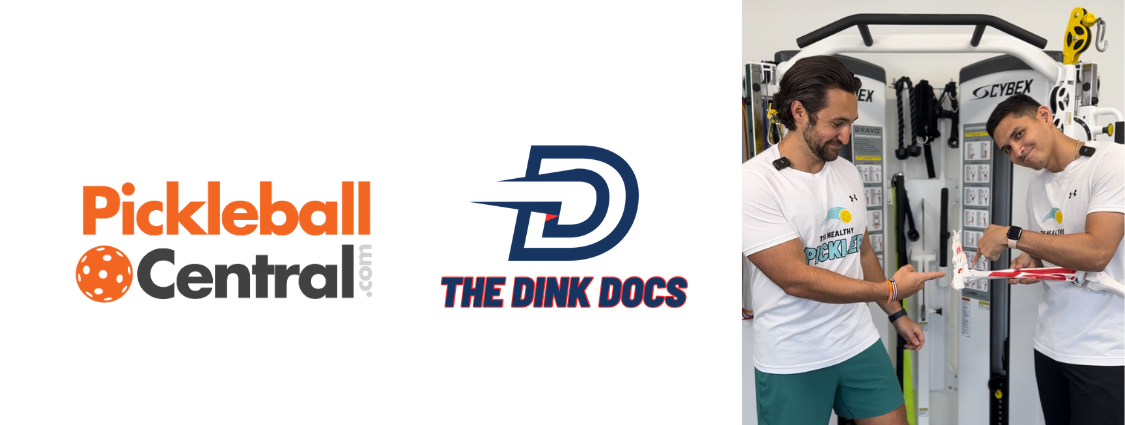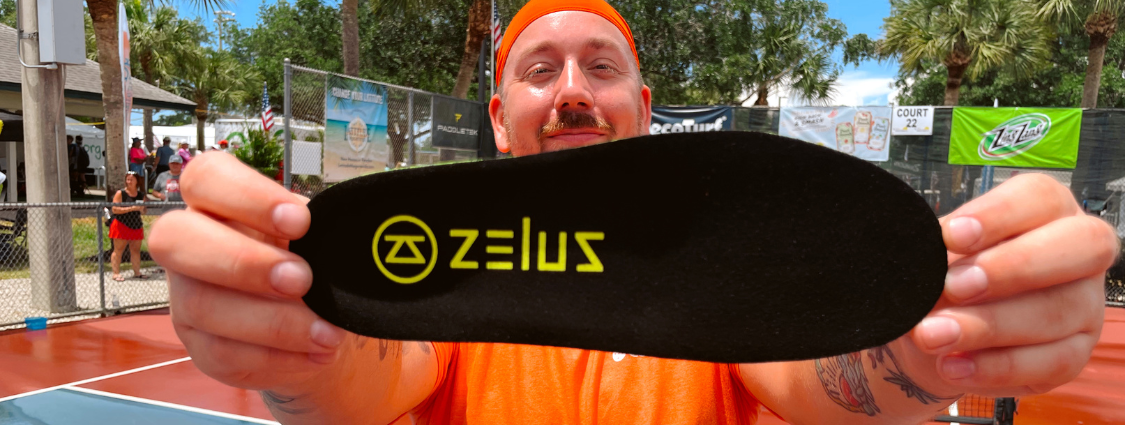Ankle Injuries in Pickleball: Road to Recovery and the Importance of Proper Footwear
Pickleball Central has teamed up with The Dink Docs from Alliance Regen and Rehab, experts in sports injury prevention, to bring you an informative series focused on player safety. Titled "Serving up Safety" this collaboration aims to equip pickleball enthusiasts with valuable insights to prevent injuries on the court.

Ankle injuries can be a frustrating setback for pickleball players. Whether you've experienced an inversion (more common) or eversion ankle sprain, understanding the recovery process, rehabilitation timeline, and the significance of wearing pickleball shoes is essential to getting back on the court.
Ankle sprains are common injuries that can occur when the ligaments that support the ankle are stretched or torn. Inversion and eversion ankle sprains are two different types of ankle sprains, each affecting a different set of ligaments and typically resulting from different movements:
Inversion Ankle Sprain:
This is the more common type of ankle sprain. It occurs when the foot rolls inward, causing the outer (lateral) ligaments on the outside of the ankle to stretch or tear. The most commonly affected ligament is the anterior talofibular ligament (ATFL).
Common Causes: Inversion sprains often happen when you land on an uneven surface, twist your foot while walking or running, or accidentally roll your ankle while playing sports.
Eversion Ankle Sprain:
Eversion sprains are less common and occur when the foot twists outward, causing the inner (medial) ligaments on the inside of the ankle to become damaged. The deltoid ligament on the inner side of the ankle is typically involved.
Common Causes: These sprains are often seen in high-impact injuries, such as car accidents, where the foot is forced outward.
Key Differences:
Direction of Foot Movement: Inversion sprains involve the foot rolling inward, while eversion sprains involve the foot twisting outward.
Affected Ligaments: Inversion sprains affect the lateral ligaments on the outer side of the ankle, while eversion sprains impact the medial ligaments on the inner side of the ankle.
Prevalence: Inversion sprains are far more common than eversion sprains.
Why Pickleball Shoes Matter:
The choice of footwear plays a vital role in ankle injury prevention and recovery. Here's why wearing pickleball-specific shoes is important:
- Support and Stability: Pickleball shoes are designed to provide excellent lateral support and stability. This is crucial for preventing ankle rolling during quick movements on the court.
- Cushioning: These shoes often have cushioning in the midsole to absorb shock and reduce impact on your ankles and joints. This is especially important during high-intensity rallies.
- Traction: Proper pickleball shoes have non-marking soles with an ideal grip on indoor courts, helping you maintain control during lateral movements and quick changes in direction.
- Fit and Comfort: Pickleball shoes are designed to fit comfortably and securely, reducing the risk of blisters and discomfort during play.
If you have been playing in running shoes or worse, take a look at our selection of Pickleball shoes. We have a wide variety of court shoes that cater specifically to your foot shape and desired feel. If you already have court shoes and you are looking for additional support and comfort, try Zelus Insoles inside your Pickleball shoes.

The Recovery Timeline:
The duration of your recovery from an ankle injury can vary depending on the severity of the injury and how well you follow your rehabilitation plan. Here's a general overview of what to expect:
Immediate Rest and Recovery: In the initial days after the injury, you'll need to rest, ice, compress, and elevate (the R.I.C.E. protocol) your ankle. This helps reduce swelling and pain.
Medical Evaluation: Consult a healthcare professional to assess the extent of the injury. They may recommend imaging like X-rays or MRI to rule out fractures or severe ligament tears.
Rehabilitation Phase: Once your injury is diagnosed, you'll enter the rehabilitation phase. This typically involves physical therapy, exercises, and mobility work to regain strength, flexibility, and balance. The duration of this phase can range from a few weeks to several months, depending on the severity of the injury.
Gradual Return to Play: Your healthcare provider or physical therapist will guide you on when it's safe to return to the court. This decision is based on your progress and the demands of the sport. It's crucial not to rush back prematurely to avoid reinjury.
While players never want to think about injuries, it is important to build a base knowledge of injuries common to pickleball so that you can stay on the court all 12 months of the year.
Check out all of our gear for Injury Prevention and Recovery.
Share Product:
SHARE THIS:

